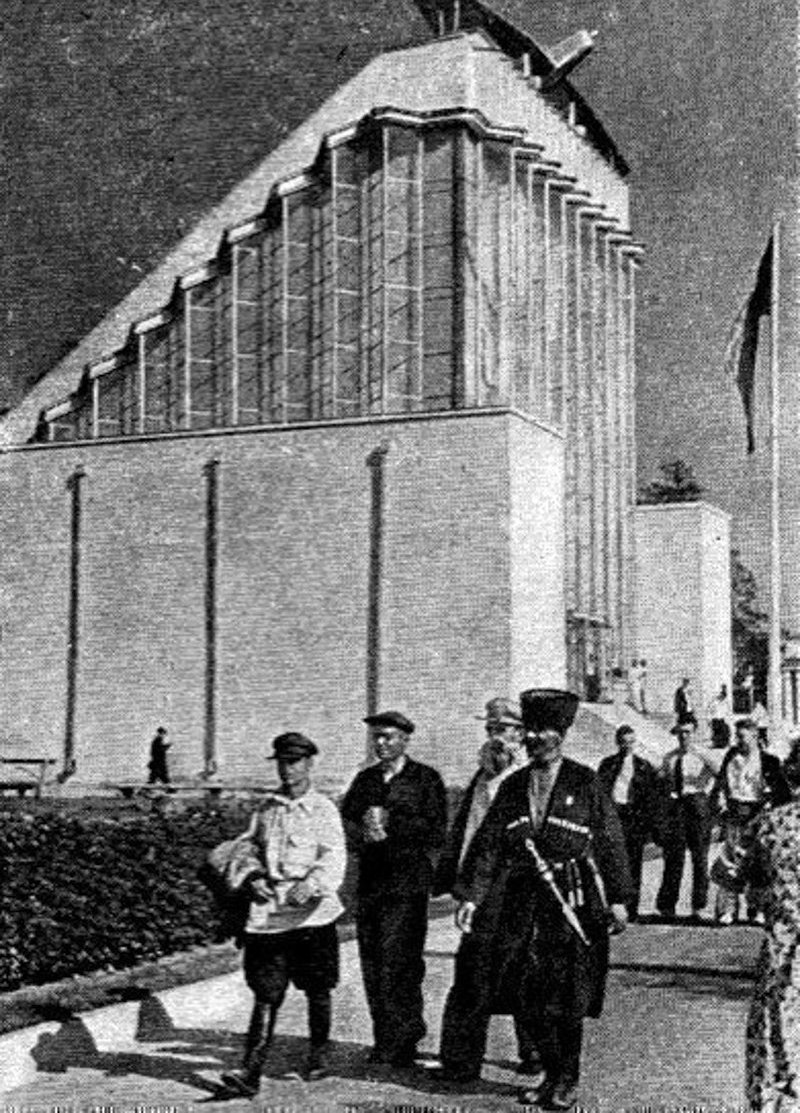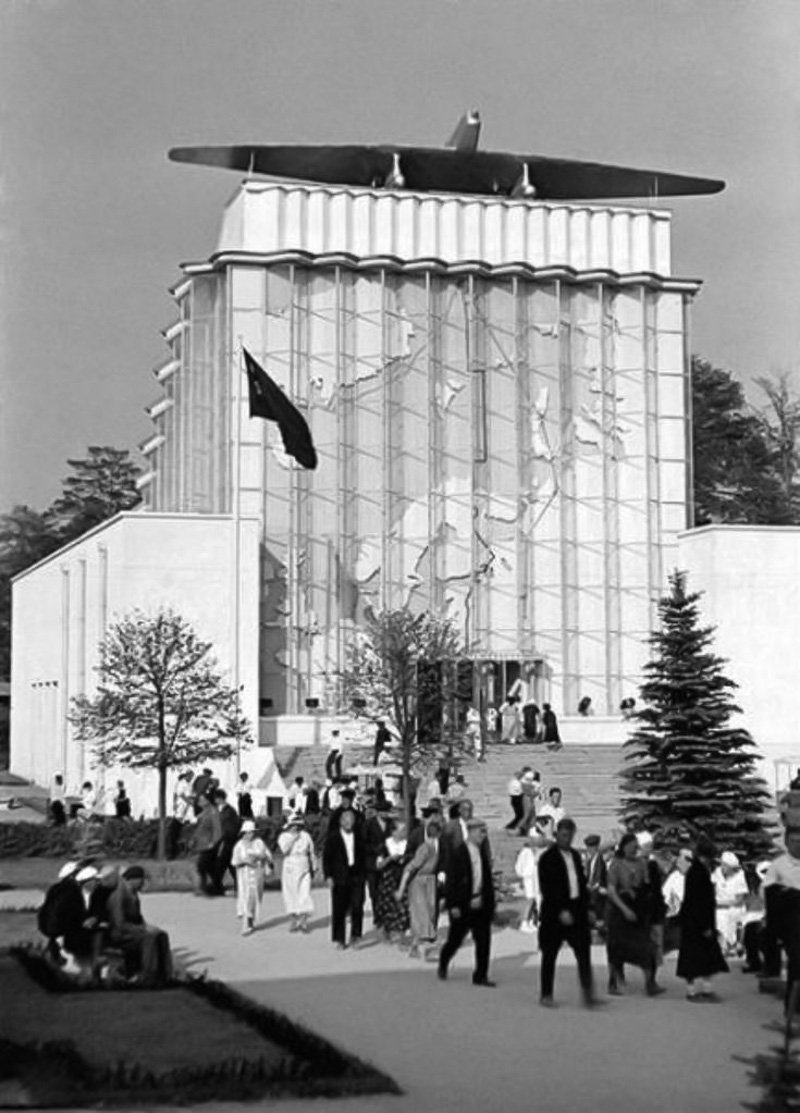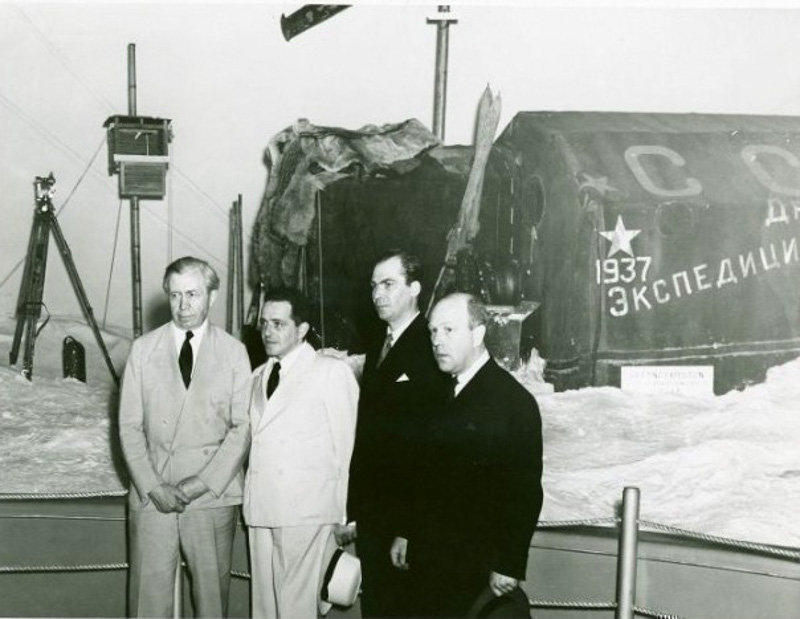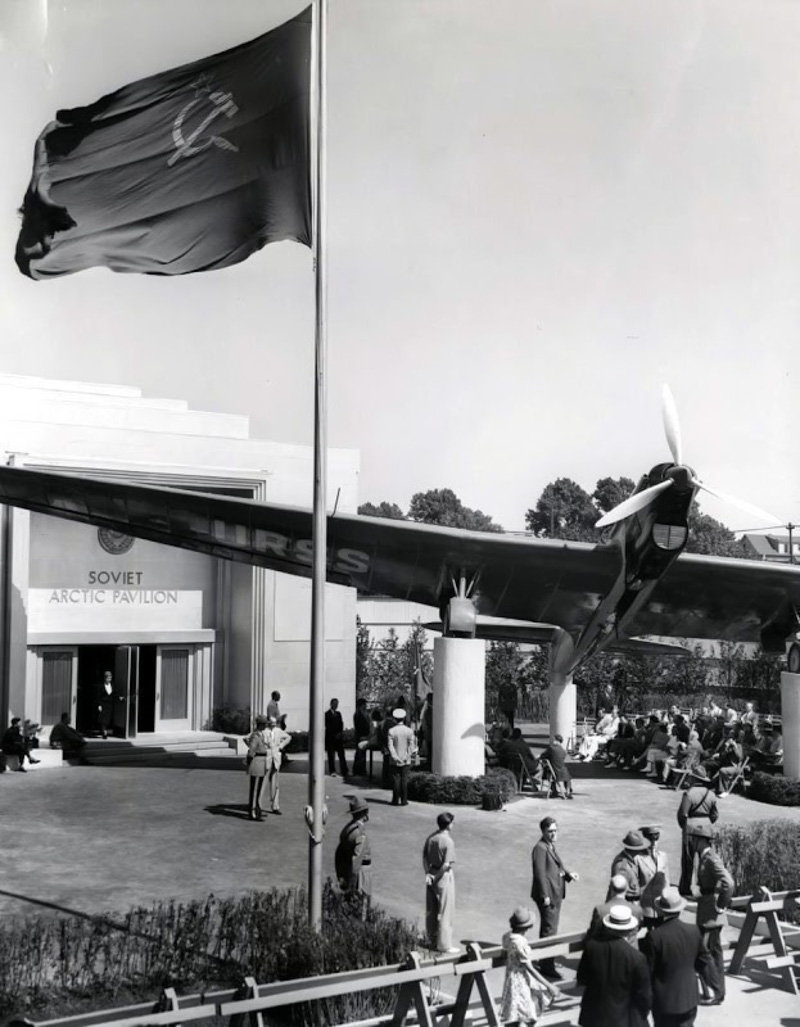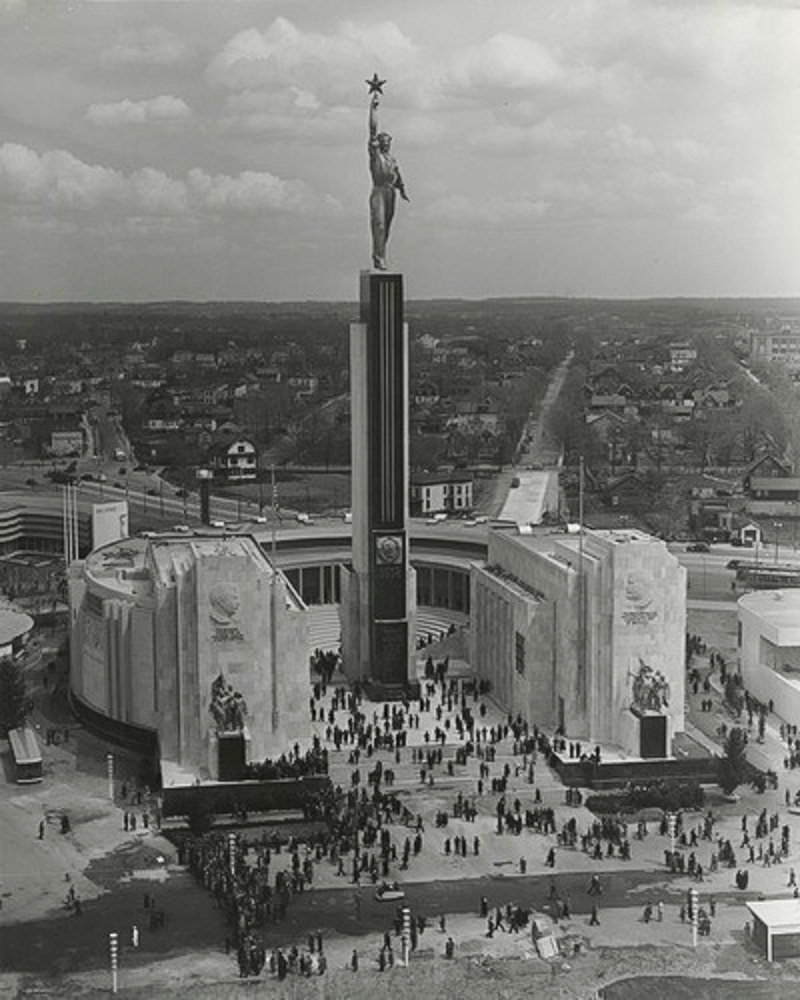From the main entrance, visitors would find themselves as if on the deck of an icebreaker whose bow section provided an excellent view of the pavilion's vast hall. The center section included a sculpture showing a group of polar explorers amid ice formations. A 65 square meter mosaic relief map called Developing the North with small lights consisted of tiny color china tiles; it illuminated the Northern Sea Route through the Arctic.
Models of the icebreaker Joseph Stalin, the flagship of the Soviet icebreaker fleet, the icebreaker Yermak and models of polar aircraft, meteorological stations, a radio beacon and the flag used by the North Pole expedition headed by Ivan Papanin were lined up below the map.
The hall featured the pictures, Stalin and Voroshilov Meet with Heroic ‘Stalin Route' Pilots and Stalin Meets with Members of the Papanin Expedition.
The spectators then "descended" from the icebreaker's ladder into the hall. The ship's transparent cargo hold contained various exhibits from the extreme north, including gold, silver, apatite, copper, nickel, tin, zinc and mountain crystal. The cargo hold also showed handicrafts made by northern ethnic groups, including clothing, footwear, ornaments and jewelry. A moving diagram in the hall's right section showed the Soviet Arctic's past and present. One stand was devoted to the Leningrad Institute of Northern Nations where representatives of 20 indigenous ethnic groups studied.
Some of the stands dealt with hunting, reindeer-breeding and farming in the north. A field overgrown with tundra heather, lichens and mosses, northern poppies and even polar birch-trees was located near the pavilion.
